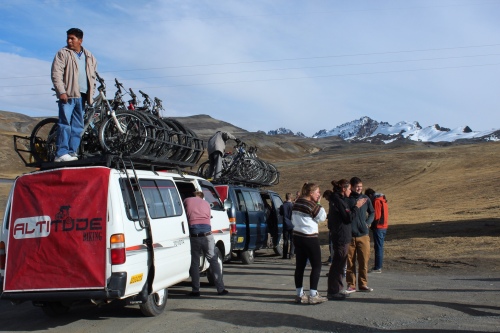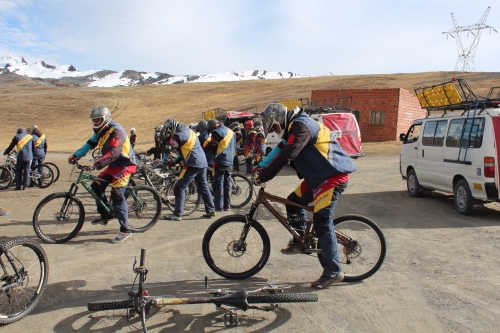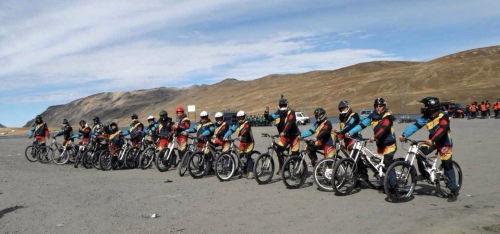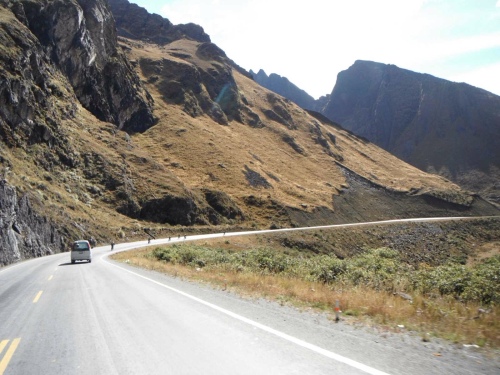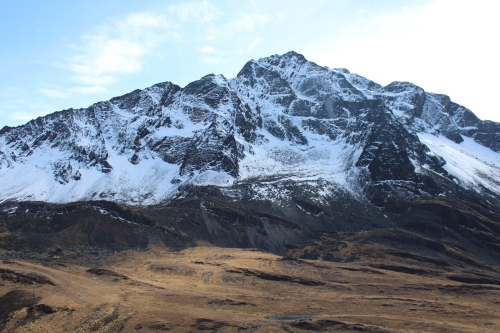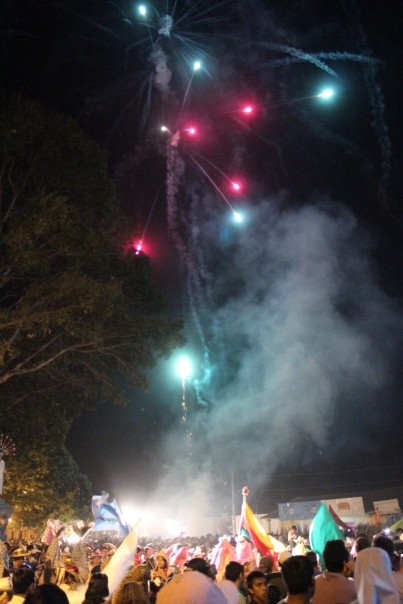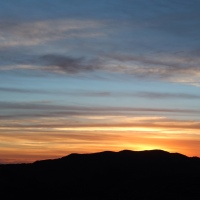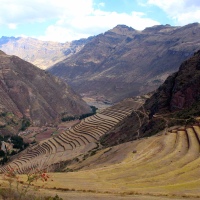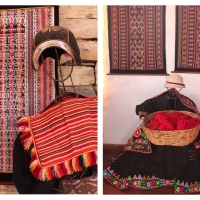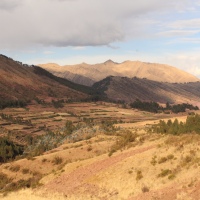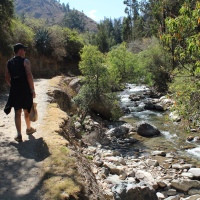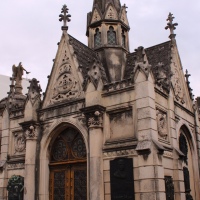There are are two tours that people commonly take when they get to Rurrenabaque: a jungle tour, which we just covered, and a pampas tour. The environments are very different. Whereas in Madidi National Park you are surrounded by dense jungle, the pampas is a large, flat, wetlands system. The pampas tours seem to be popular because they provide three unique opportunities:
- A morning hike searching for anacondas.
- A swim with the Amazon's pink freshwater dolphins.
- A boat trip to catch piranhas.
There are a range of tour operators offering pampas tours, with those promoted by Lonely Planet being the most popular. They are typically very cheap and some also offer a budget jungle tour. Apparently they all do the same thing but we would recommend doing a bit of research to see which ones are currently in favour.
We ended up going with Fluvial Tours, a budget operator. The choice was mainly driven by price – Chalalán was a bit of an outlay (although cheaper than the Pantanal) so we wanted to squeeze in another trip on the cheap.

Sunrise over the pampas.
The whole tour takes place in Pampas del Yacuma National Park, a protected area three hours drive northeast of Rurrenabaque. The tour was unique for us in that it was confined to the river. All travel is by boat, with accommodation provided by a series of lodges along the banks.
Travelling on the river is like cruising through an animal theme park. We saw many storks, herons, turtles, caimans and large capybara. The first afternoon was spent slowly cruising up the river to our lodgings. It was a beautiful day and very relaxing.

Chillin.

Fun with filters. A vulture soars above us.
The herons were quite striking. They are large, graceful birds and very photogenic.
We wrapped up two hours on the river with sunset beers. A nice opportunity to meet people and to watch as dopey tourists found their Dutch courage and got close to a caiman (no-one was harmed).
Searching for Anacondas
The next day we went in search of anacondas. This required a full morning trudging through marshlands in search of the python. Unfortunately we were unsuccesful but we knew in advance the chances were 50/50. It didn't help that our guides were not very informative and after some time our guide actually lost us. We wandered around for awhile, then decided to head back to where the boats were on the river. We eventually caught up with him back at the boat but no apology was given, which we thought was pretty slack given that he was supposed to help us find the anacondas!

Muy macho.

The land alternated between knee high water and dry grass islands.
The good news is we later found anacondas in a park in Trinidad. There are five of them in a cage near the military airstrip, much easier than trudging through the marshes!
Swimming with Dolphins
Everybody likes the idea of swimming with dolphins, and these dolphins are special. They are pink! The Amazon River Dolphin can be found throughout the Amazon Basin in South America in fresh water rivers. The dolphins have been there since South America was covered by a salt water sea, and got stuck in the basin when the sea receded.
They are a slightly stubby (uglier) version of the dolphins you might see in the ocean and are practically blind due to the murky river water. As a result, swimming with them is not as romantic as it sounds, and we heard several stories of people being bitten on their hands and feet while they were splashing around in the river. We jumped in the water when they were close by, but didn't get too close. They are quite shy and are after all wild animals. Still, it was a exciting experience to be swimming in a river in the Amazon surrounded by pink dolphins, caiman and piranhas!
Fishing for Piranhas
Another big draw is the opportunity to catch piranhas. Now, we'll be frank about this one. Piranhas are actually quite small and are not the flesh eating beasties you might believe them to be. Very anticlimactic. Still, they are infamous and people want to catch them. We gave it a go but the little buggers kept wriggling off the line (hooks were too big). We caught a few sardines and a catfish but otherwise were unlucky. Don't go out of your way for this experience.

Our guide with a little cat fish.
Monkeys Everywhere
We were surprised at the number of monkeys we saw. Our camp lodgings were visited by a pack of yellow squirrel monkeys several times a day. They would run along the hand rails and two even got inside a dorm room. We also saw kapuchin and howler monkeys several times.

A yellow squirrel monkey looking to snatch some food.

Howler monkeys staring at those funny homo sapiens.
All in all it was a good time. It was more social than Chalalán due to the mingling with other groups but we saw less animal species, although the ones we did see were in abundance. We would recommend a trip, it is good fun but bear in mind that they churn through tourists here and the wildlife is not always respected as it should be. Also, the guides may disappoint. We can't provide names of some the animals we saw because we never learnt them!

A Tiger Heron.

Two jabirus in their nest.

A capybara on the river bank. They seemed to be bigger here than in the Pantanal.















